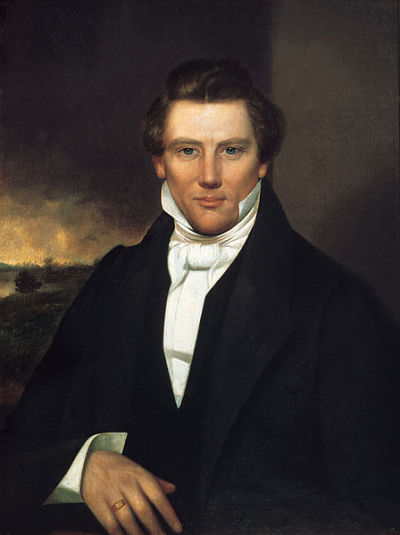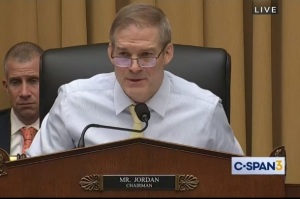Mormon Founder Had Up to 40 Wives, Including 14-Y-O, Married Women; Said Angel Promised Destruction If He Hadn't Done It

Joseph Smith, the controversial figure who founded the Church of Jesus Christ of Latter-day Saints, was long accepted as a faithful and monogamous husband by many of the church's followers. But church leaders recently revealed that Smith was a husband to as many as 40 wives, including married women and a 14-year-old girl.
An essay released by the church highlighted a history of the controversial practice carried out by Smith and some of his close associates, and noted that many of the church's followers can trace their lineage to polygamous relationships.
Despite monogamy being the accepted form of relationship during the 1830s when the church was founded, Smith told associates that he was commanded by an angel to engage in the practice or suffer destruction.
"When God commands a difficult task, He sometimes sends additional messengers to encourage His people to obey. Consistent with this pattern. Joseph told associates that an angel appeared to him three times between 1834 and 1842, and commanded him to proceed with plural marriage when he hesitated to move forward. During the third and final appearance, the angel came with a drawn sword, threatening Joseph with destruction unless he went forward and obeyed the commandment fully," explained the essay.
Smith, after getting the revelation about polygamy, married multiple wives and shared the practice with his close associates. A footnote in the essay estimates that Smith had 30 to 40 wives.
"This principle was among the most challenging aspects of the restoration — for Joseph personally and for other church members. Plural marriage tested faith and provoked controversy and opposition. Few Latter-day Saints initially welcomed the restoration of a biblical practice entirely foreign to their sensibilities. But many later testified of powerful spiritual experiences that helped them overcome their hesitation and gave them courage to accept this practice," explained the essay.
The church highlighted that not much is known about the practice because early Mormons kept their involvement in the practice of polygamy private, and didn't start discussing their experiences until the church had moved to Utah, where the church publicly acknowledged the practice. What little is there, however, revealed agonizing struggles.

"Lucy Walker recalled her inner turmoil when Joseph Smith invited her to become his wife. 'Every feeling of my soul revolted against it,' she wrote. Yet, after several restless nights on her knees in prayer, she found relief as her room 'filled with a holy influence' akin to 'brilliant sunshine.' She said, 'My soul was filled with a calm sweet peace that I never knew,' and 'supreme happiness took possession of my whole being,'" explained the essay.
Many of those who engaged in the practice posited that while monogamy was the standard relationship, polygamy was allowed by God so the church could "raise up seed" unto Him.
During the time that polygamy was practiced in the Mormon church followers distinguished between two types of marriages, noted as sealings for time and eternity and sealings for eternity only.
"Sealings for time and eternity included commitments and relationships during this life, generally including the possibility of sexual relations. Eternity-only sealings indicated relationships in the next life alone," explained the essay.
Smith, according to the essay, practiced both types of marriages with his wives who were aged mostly between 20 and 40. He, however, married Helen Mar Kimball, "several months before her 15th birthday."
Kimball, who was the daughter of a Smith's friends, said her sealing to him was "for eternity alone," implying that they never had sex. When the Mormon church founder died she remarried and defended him and plural marriage.
Her father, Heber C. Kimball, was not initially warm to the idea. "I never felt more sorrowful," he said of the moment he learned of plural marriage in 1841, according to the essay. "I wept days. … I had a good wife. I was satisfied."
The essay noted that at the time of Smith's polygamous run, it was not uncommon for teenage girls to get married. Richard Packham, founder and past president of The Exmormon Foundation, told The Christian Post in an earlier interview that Helen Mar Kimball was not the only teenager that Smith married."
"There were several others, including girls who were legally his wards," said Packham, who also took issue with the claim that teenage brides were common back then. "It was highly unusual. And it was not just a matter of a 14-year old marrying. It was a 14-year-old marrying a 37-year-old man who already had over 20 wives, and thus illegal, according to the law."
Prior to the church publicly acknowledging the polygamous practice, the essay also explains that "a few men unscrupulously used" rumors of the practice to seduce women in an unsanctioned practice known as "spiritual wifery."
"When this was discovered, the men were cut off from the church. The rumors prompted members and leaders to issue carefully worded denials that denounced spiritual wifery and polygamy, but were silent about what Joseph Smith and others saw as divinely mandated 'celestial" plural marriage,' said the essay.
"The statements emphasized that the church practiced no marital law other than monogamy while implicitly leaving open the possibility that individuals, under direction of God's living prophet, might do so," it continued.
Smith's wife, Emma, also vacillated between agony and acceptance of her husband's polygamous ways and accepted some wives while disapproving of others.
The practice, however, forced some followers to quit the church.
"Some Latter-day Saints rejected the principle of plural marriage and left the church, while others declined to enter the practice but remained faithful. Nevertheless, for many women and men, initial revulsion and anguish was followed by struggle, resolution, and ultimately, light and peace. Sacred experiences enabled the Saints to move forward in faith," explained the essay.
Some present day Mormons were shocked by the revelations.
"Joseph Smith was presented to me as a practically perfect prophet, and this is true for a lot of people," Emily Jensen, a blogger and editor in Farmington, Utah, who often writes about Mormon issues, told The New York Times.
Jensen explained that some Mormons' reaction to the revelation resembled the five stages of grief, specifically the first two, denial and anger.
"There is so much out there on the Internet that we felt we owed our members a safe place where they could go to get reliable, faith-promoting information that was true about some of these more difficult aspects of our history," Elder Steven E. Snow, the church historian and a member of its senior leadership, told the Times.
"We need to be truthful, and we need to understand our history," he added. "I believe our history is full of stories of faith and devotion and sacrifice, but these people weren't perfect."




























